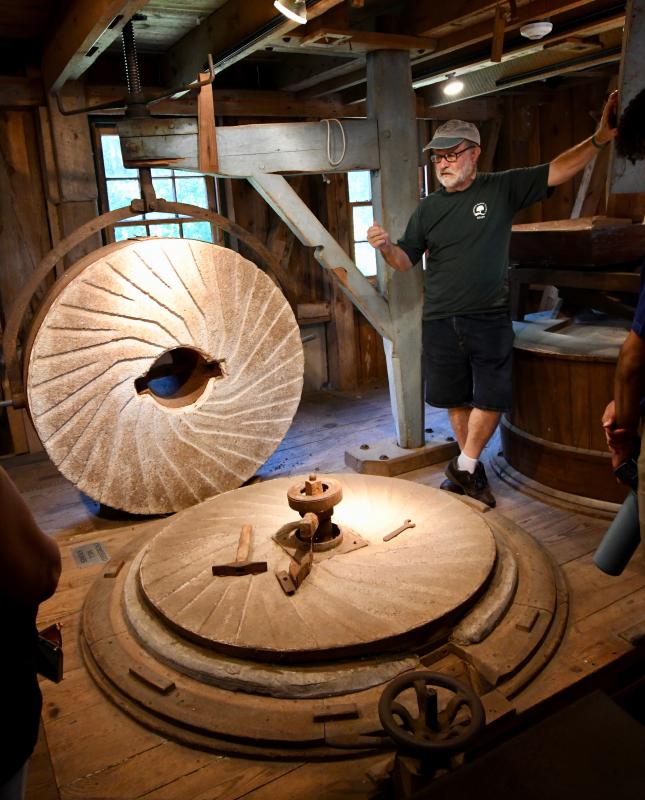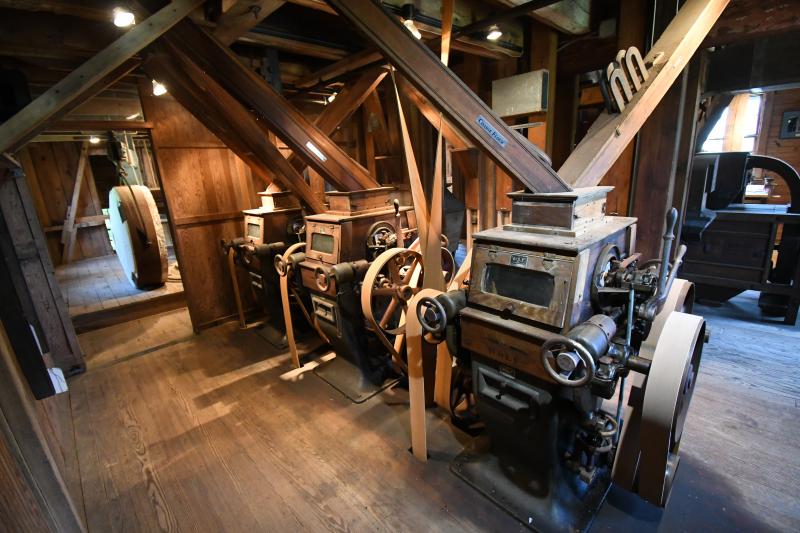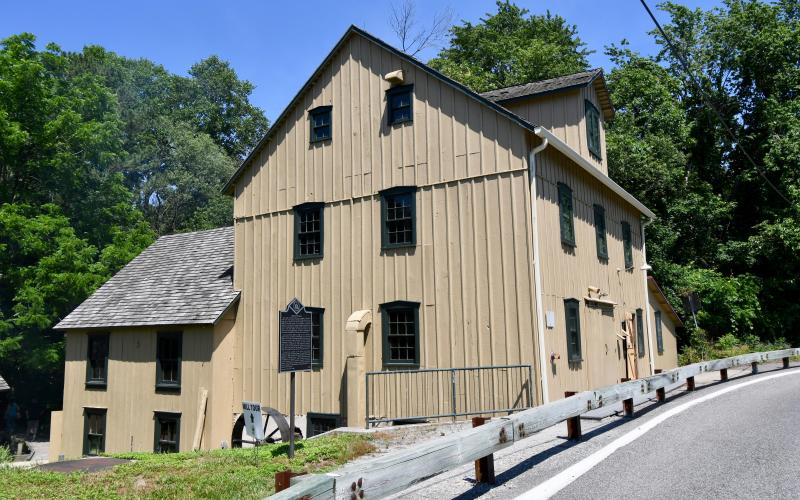A time when mills powered Sussex’s economy
For the better part of two centuries, grist mills were an important part of Sussex County's economy. Every town, village and crossroads had at least one where farmers would bring their corn, wheat and barley to be milled into flour. There were at least 40 mills in the county from the late 1600s into the 20th century.
Some towns – Millsboro, Milton and Milford – reference the mill industry in their names.
In the days before gasoline and electrical power, water power was the only force to turn the massive wheels at the mills. Sussex County does not have any natural ponds – every one was created by a dam to harness water power at a mill.
There is very little evidence left from that period, except in museum exhibits. The only working mill is Abbott's Mill outside Milford. The Hearn and Rawlins Mill near Seaford was commercially active selling its famous White Dove flour up until the early 2000s.
The United Nation of Islam bought the Hearn and Rawlins mill in 1999 so it would have a place to grind the grain it was growing on farms on the Eastern Shore of Maryland. UNI wanted to make flour without preservatives to use in its bakery in Kansas City, Kan. UNI operated the mill for about 10 years, and it was acquired soon afterwards by Delaware’s Division of Historical and Cultural Affairs, which also owns Abbott's Mill.
The oldest, and probably the longest-operating mill was one at Goslee Mill Pond between Lewes and Angola.
One of the last remaining mills, Warren's Mill on Betts Pond Road in Millsboro, was an area landmark, but because of neglect, it was torn down last year.
Red Mill near Lewes, Milford Mills, Old Red Mill, Tub Mill, Marshall's Mill in Milford, Waples Pond Mill and Reynold's Mill near Prime Hook, Craig's Mill and Seaford Enterprise Milling Co. in Seaford, Record's Flour Mill and Bacon and Sons New Mill in Laurel, Milton Mill, Millsboro Mill and Diamond State Roller Mills, and many more have all slipped away into history.
Henry Ford buys mill
Believe it or not, one local mill ended up in Henry Ford's Museum in Dearborn, Mich.
The interior equipment, a grain-grinding apparatus at least 130 years old, of a grist mill on Burton's Pond near Angola and Love Creek, was purchased by an agent of Henry Ford. Burton's Mill had been in operation continuously for more than 130 years. On Sept. 25, 1931, the mill was dismantled and shipped by railroad to Detroit.
Abbott's Mill
If you want to know anything about the history of mills, Steve Childers at Abbott's Mill is the man to seek out. He has researched mills throughout the area more than anyone else. He writes a blog at gristfromamill.net.
He's also the man who keeps Abbott's up and running.
Abbott's Mill on Abbotts Pond Road is truly a step back in time. The mill, which has been completely restored, is the last remaining working mill in the region. It’s been placed on the National Register of Historic Places.
Although a mill at the location dates back to 1795, the restored mill of today was started by Ainsworth Abbott in 1919. He ran the mill as a one-man operation, except for deliveries, until he retired in 1963 at the age of 78.
The three-story mill uses a series of elevators, pulleys, chutes, rollers, grinders and even magnets to remove metals to clean and process grains into flour. While corn and wheat were the primary grains being processed into flour at the mill, other grains included buckwheat, rye and oats.
The system includes trapdoors, crackers, sifters, shellers, gyratory bolters, sieves with screen and cloth meshes, flour dressers and packers, and sieve bolters. Grains were cleaned, broken down and sifted. The bran and germ were separated from the flour, and bran was sold as poultry and livestock feed. Childers said, at the time, women preferred a white, powdery flour “with all the good stuff removed.”
Childers said money was not exchanged between Abbott and farmers. Instead, farmers allocated 10% to 12% of the flour to the miller, who sold it in stores from Georgetown to Dover.
Abbott could produce more than a ton of flour, about 10 to 12 196-pound barrels, a day. On a typical week, one day was set aside for receiving and cleaning grain, another for grinding, and another for bagging and delivery.
Once a grain started in the system, Childers said, it was not touched again until the bagging process.
It was converted from a water-wheel operation to a gasoline turbine engine in 1935.
Childers said the mill has only been used once to grind grain since 1963. In 2011, staff milled 400 pounds of barley as one of the key ingredients in Dogfish Head's Delaware Native Ale.
It's impossible for a novice to explain how a mill works. Seeing one in action is the best way to understand the inner workings of a mill, mostly built of wood.
Guided tours of Abbott's Mill are available on the third Saturdays of the month from March through November. Admission is free to members and $5 to nonmembers.
The historic mill is part of the Abbott's Mill Nature Center in the 376-acre Milford Millponds Nature Preserve and operated by Delaware Nature Society. There is much more available at the center, including hands-on nature education programs for people of all ages, trails, guided hikes, bird walks, summer camp, eco tours, a nature center and many events throughout the year, including Music at the Mill the second Thursday of each summer month from 6 to 8 p.m.



























































